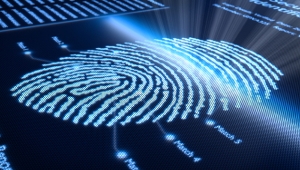
Fingerprint recognition refers to the automated method of verifying a match between two human fingerprints. Because of their uniqueness and lifetime consistency fingerprints have been used for identification in Europe for over a century. A variety of features perfectly qualifies them for the biometric identification and verification of people. Basically, there are three hierarchical levels of analyzing fingerprints.
The first level refers to the basic pattern which is not unique but serves as a classifying tendency. The basic patterns are loops (60%), whorls (35%) and arches (5%). While the second level deals with the minutiae (changes in the course of the papillary lines), the third level analyzes even deeper details such as contours or skin pores.
The fingerprint identification deals with detailed characterization of latent prints. Over the years, the detection of fingerprints has been automated to great extent. Initially, the criminal investigators had used almost exclusively powders and chemicals. Nowadays, a few technical solutions for the detection, enhancement and preservation of latent fingerprints like EVISCAN are utilized. The applied process and the success rate of the detection of fingerprints mainly depends on the quality of the print itself and of the surface material. A distinction is made between porous and non-porous surfaces. The fingerprint detection on non-porous surfaces is only possible by using chemicals.
Once the fingerprints have been found and saved, according to the corpus delicti they are compared either manually by means of the above-mentioned hierarchical steps or automatically applying internationally available databases, preferably AFIS. The application of an AFIS-System can essentially be divided into two categories:
– 1:1 Match (fingerprint verification): Check for correspondence between a given print and a limited set of reference prints. This system is often used for the legitimation of persons.
– 1:N Match (fingerprint identification): Check for correspondence between a given print and all already known reference prints in the database. This procedure is used e.g. to determine if a person was involved in a criminal offense.
The fingerprints within the database are available either in optimal quality provided by cooperating persons or in limited quality for example taken off victims. In the case of bad quality of fingerprints the use of special search algorithms is necessary. These are much more time- and resource-consuming than those of the higher-quality prints. Thus, an analysis process can be extended easily from a few seconds to several days. The reduced quality of the prints eliminates a fully automated assignment. Thus, a highly qualified inspector still has to select the restricted search results based on the identified hit quantities. This manual operation is also referred to as “adjudication”.



